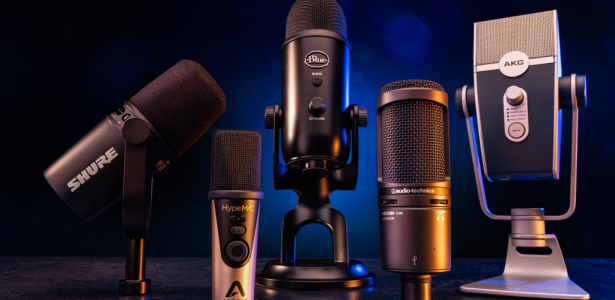
When it comes to podcasting, streaming, or simply recording high-quality audio, the debate between XLR and USB microphones can quickly get heated. Both have their merits and drawbacks and what works for one person may not necessarily suit another. In this article, we’ll delve into the key differences between XLR and USB microphones, helping you make an informed choice.
The XLR Microphone
Versatility
XLR microphones have long been the industry standard in professional settings, thanks to their versatility and reliability. Whether you’re in a recording studio, live performance space, or a professional broadcasting environment, you’ll likely find XLR microphones.
Audio Quality
One of the significant advantages of XLR microphones is their superior audio quality, largely due to the analog signal path and better internal components.
Expandability
Another crucial feature of XLR microphones is the ability to plug them into audio interfaces and mixers, allowing for greater control over the sound and the potential to connect multiple microphones simultaneously.
Drawbacks
The flip side is that XLR microphones usually require an external audio interface to connect them to a computer, which means an additional investment and more complexity in your setup.
The USB Microphone
Simplicity
USB microphones are plug-and-play, making them user-friendly and perfect for beginners or those who require a more straightforward setup. Just plug the microphone into a USB port on your computer, and you’re good to go.
Portability
These microphones are typically smaller and more portable than their XLR counterparts, making them ideal for on-the-go recordings or less permanent setups.
Cost-Effectiveness
USB microphones are usually more budget-friendly, given that you don’t need to purchase an external audio interface.
Drawbacks
On the downside, USB microphones often offer less control over your audio and may suffer in terms of audio quality when compared to XLR microphones. They may also be limiting if you plan to scale up your setup in the future, as they typically can’t be connected to audio interfaces or mixers.
The Verdict
- Go for XLR if: You’re looking for the best audio quality, plan on having multiple microphone setups, or are willing to invest in an audio interface.
- Choose USB if: You need something simple, portable, and budget-friendly that offers reasonable audio quality for non-professional applications.
Your choice between XLR and USB will ultimately depend on your specific needs, skill level, and what you find most important — be it the quality of sound, ease of use, or the ability to expand and upgrade your setup in the future.

